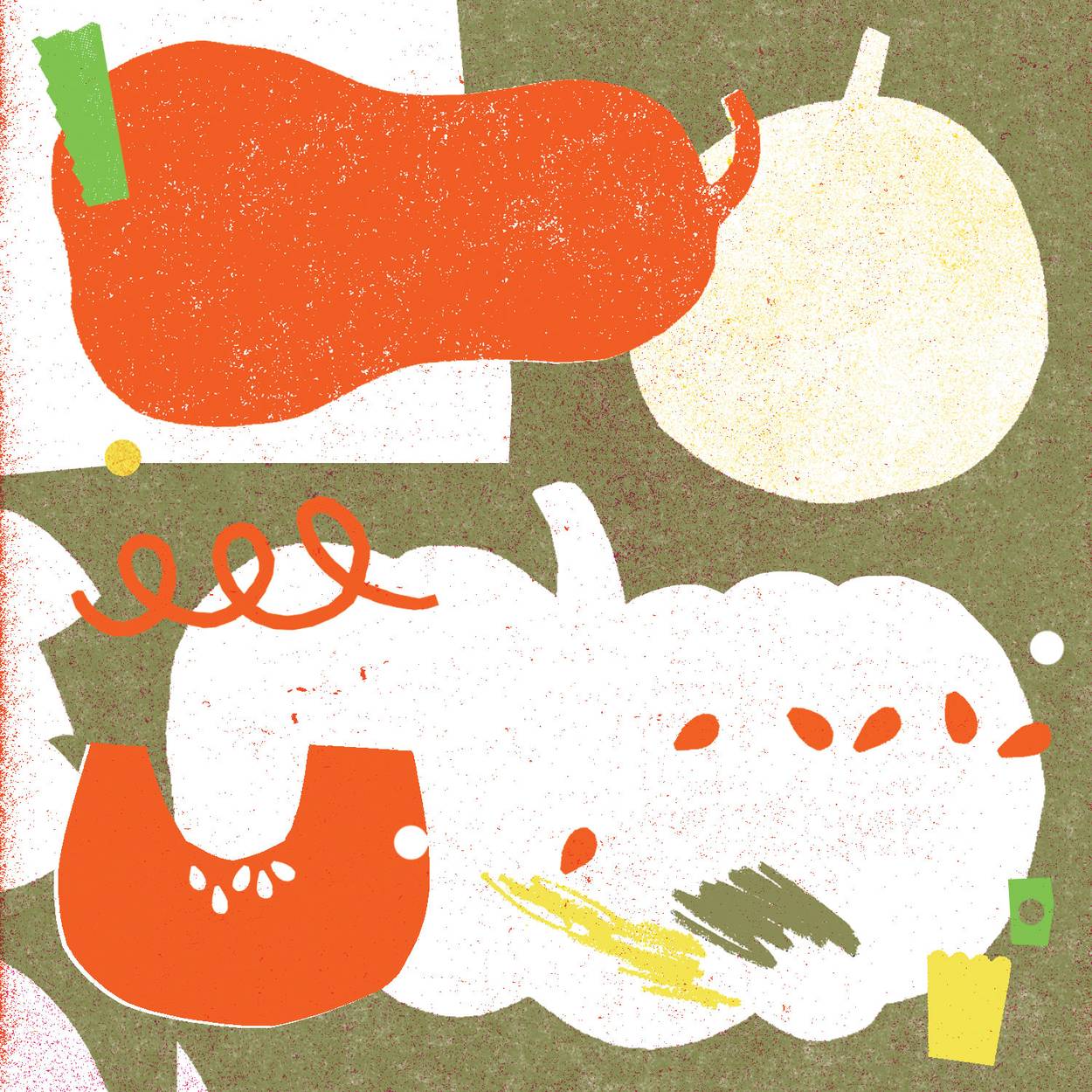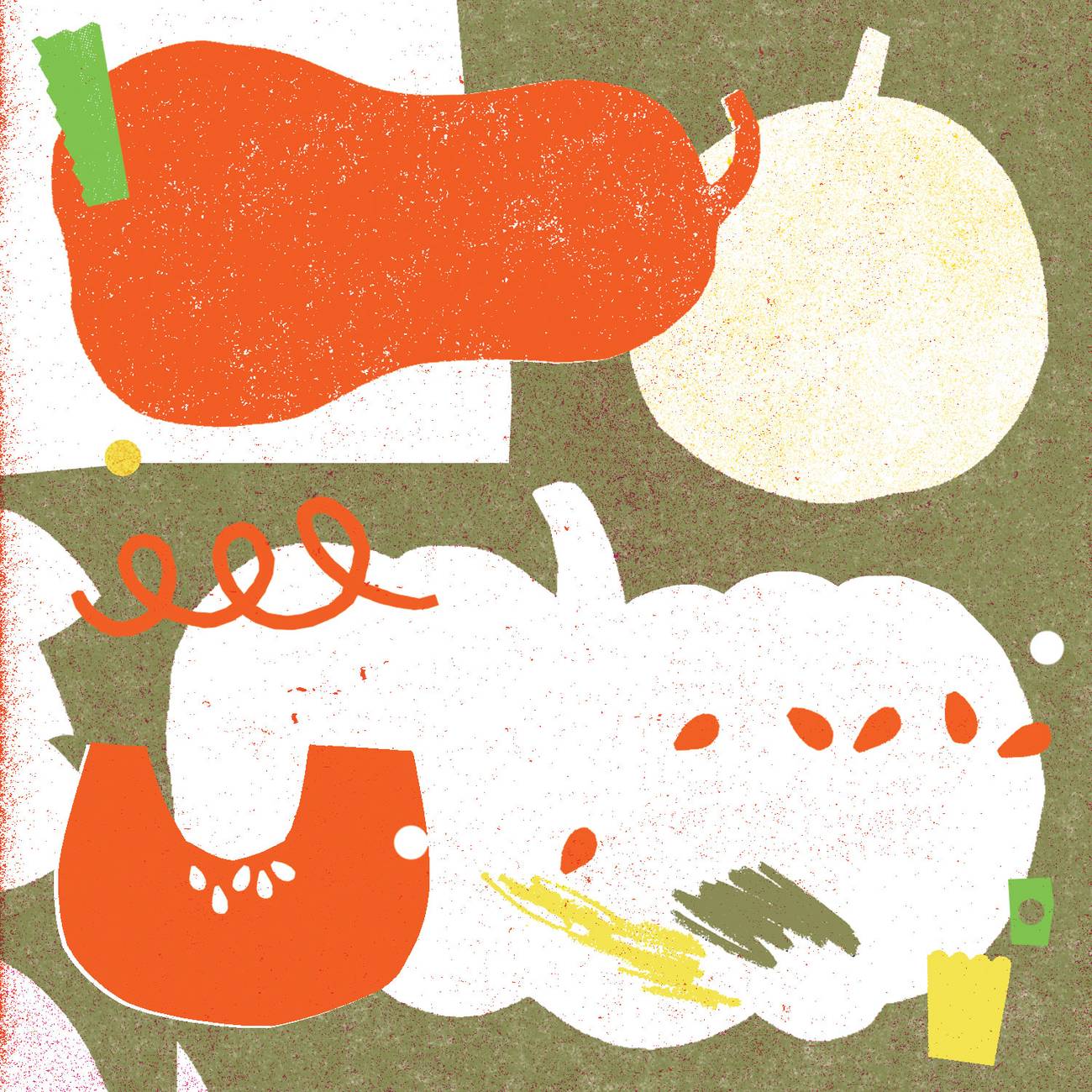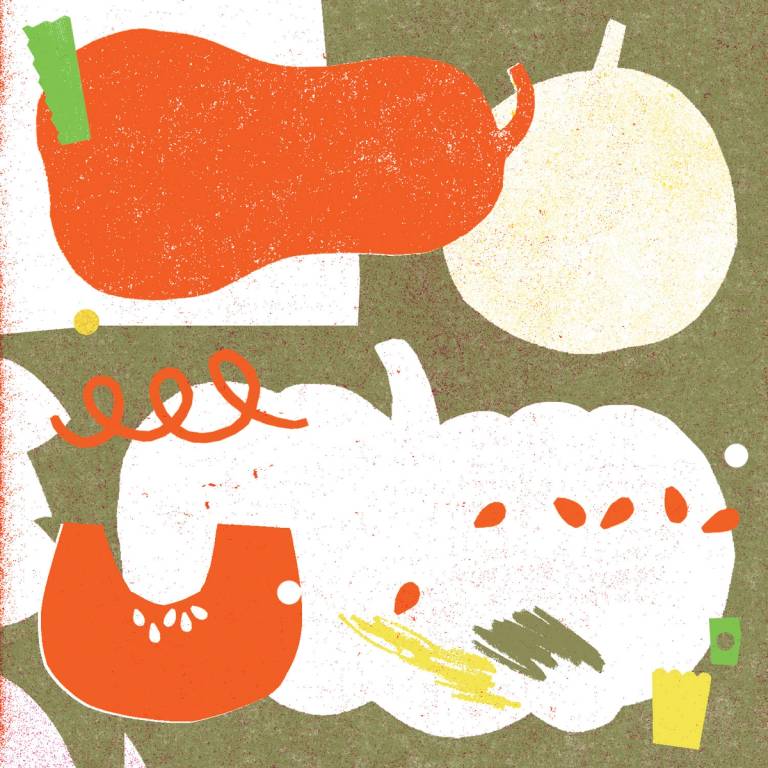The pumpkin is one of the oldest cultivated vegetables known to man. The name refers to various squash or winter squash of the genus Cucurbita that have been grown from the southern United States down to Central America for more than 8,000 years. A close relative of the pumpkin is the bottle-gourd or calabash (Lagenaria siceraria), which was mentioned in the Bible and was known to the ancient Egyptians, Greeks, and Romans, who not only used it as a food but also as a storage container or a bowl, on account of its thick skin.
Pumpkins were first introduced to Europe by the conquistadors in the 16th century, where they were quickly adopted by Sephardic Jews, who then introduced them to Italy after fleeing the Spanish Inquisition. Sephardim and Italian Jews not only began trading in pumpkins, they also incorporated the new gourd into numerous dishes both sweet and savory—especially soups, puddings, fritters, cakes, and preserves—so much so that the new vegetable became associated with Jews. As Claudia Roden writes in The Book of Jewish Food, tortellini di zucca gialla (pumpkin ravioli) “is said to be a Jewish legacy.” The same can be said for the Venetian budino di zucca (pumpkin pudding) and zucca disfatta, a pumpkin puree flavored with citron that the Jews of Ferrara enjoyed to break the fast after Yom Kippur. As the Hebrew word for pumpkin was qara—which sounds similar to the Hebrew word tikraa meaning “to tear up” or “to be torn up”—it became customary for Sephardic Jews to recite a simple prayer on the Rosh Hashanah evening meal asking God to “tear up” any evil decree against us, and for our merits to be read out in the heavenly court—which was followed by eating some candied pumpkin. The thick outer rind of the pumpkin symbolized the hope that they would be protected in the year ahead. Its golden-orange color also represented happiness and prosperity for the coming year.
Soon every Jewish community around the Mediterranean and beyond developed its own pumpkin specialities. The Jews of Turkey and Greece like to prepare sweet pumpkin-filled filo pastries for Sukkot. Pipitada, a sweet drink made with pumpkin seeds, sugar, and rose water, is often prepared by the Jews of Thessaloniki and Rhodes for Rosh Hashanah and Yom Kippur. Syrian Jews use pumpkin as a filling for bulgur pies and pancakes, while Moroccan Jews like to simmer pumpkin in a sweet-and-sour sauce with onions, raisins, honey, ginger, and saffron. Tunisian Jews, on the other hand, often start their meal with a spicy pumpkin puree. Farther afield, Bukharan Jews celebrate the New Year with bichak (savory pumpkin pastries) while the Baghdadi Jews of Bombay (now Mumbai) enjoy pumpkin preserves flavored with cardamom.
Today in America, the pumpkin has become the quintessential symbol of Halloween, but also the entire fall harvest season—from the pumpkin spice lattes that reappear every autumn to the pumpkin pies that grace many dinner tables at Thanksgiving.
Currently pumpkins are one of the most popular crops in the United States. Not only the flesh is edible, but also the flower, leaves, and seeds. Pumpkins can be boiled, steamed, roasted, or made into soups, purees, pies, flans, and custards. The flowers can be stuffed and made into fritters or simply used as a garnish. Pumpkin seeds are delicious toasted and make a very good snack or topping for soups or salads. Pumpkin seed oil may be used for cooking or in salad dressings, but it is usually combined with a bland oil because of its strong flavor. In Zambia, the leaves are often boiled, then combined with a ground nut paste and served as a side dish.
There are over 150 varieties of pumpkin in the world. They come in a diversity of colors and sizes. Some are broad and squat, others are tall and pear-shaped. The color of their skins can vary from orange, yellow, light-gray, and greenish-blue, to inky black or even white. Sometimes the skins are mottled or striped. Some of the best varieties for cooking include the white-skinned Casper pumpkin, which has sweet, deep-orange flesh and is very good for baking and making pies; the golden yellow fleshed Cherokee Bush pumpkin, which is perfect for roasting or making into soups, muffins, or pancakes; and the excellent Musquee de Provence from southern France, which is shaped like a wheel of cheese with prominent lobes and brown skin and is prized for its fine flavor.
Pumpkin is also good for your health. It is rich in vitamin C, vitamin E, beta carotene, iron, and folate, all of which boost your immune system. It is also a good source of potassium, which can help reduce blood pressure and lower the risk of heart disease. It also fills you up with very few calories, so it may even help you lose weight.
Paola Gavin is a food writer and author of four vegetarian cookbooks including Hazana: Jewish Vegetarian Cooking. Follow her on Instagram @paolagavin and on Twitter @paolagavinfood.


